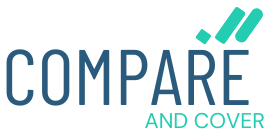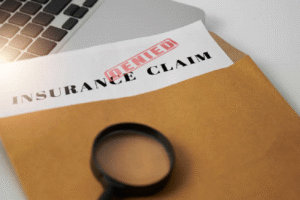Buying your first home is an incredible milestone—one full of excitement, dreams, and plenty of decisions. Among the many things you need to figure out, home insurance might feel like just another box to tick, especially since your mortgage lender usually requires it. But in reality, your homeowners insurance is much more than paperwork; it’s your financial safety net when unexpected mishaps happen.
Whether it’s a burst pipe, a break-in, or a severe storm, home insurance protects you from potentially devastating losses. If you’re a first-time buyer feeling overwhelmed or unsure about where to start, this guide will walk you through the essentials so you can make smart choices and get the right coverage.
What Exactly Is Homeowners Insurance?
At its core, homeowners insurance is a policy that helps protect your home and belongings against damage or loss from common risks. This can include fire, theft, vandalism, storms, or other disasters. But the protection doesn’t stop at your property—it also covers liability. For example, if someone slips and falls on your property and decides to sue, your insurance can help cover legal fees or medical costs.
The peace of mind that comes with knowing you won’t be left with huge bills after a disaster is invaluable. That’s why understanding what your policy covers is so important.

The Key Coverages You Should Look For
As a first-time buyer, insurance jargon can be confusing. Here are the basic types of coverage your policy should include to keep you protected:
1. Dwelling Coverage
This is the heart of your policy—it covers damage to your home’s physical structure. If your house needs repairs after a fire or a fallen tree, this is what pays for rebuilding or fixing your home.
2. Personal Property Coverage
This protects the things inside your home—your furniture, electronics, clothing, and more. It helps replace or repair your belongings if they’re stolen or damaged.
3. Liability Protection
Liability coverage comes into play if someone gets injured on your property or if you accidentally cause damage to someone else’s property. It can cover legal costs, medical bills, or settlements if you’re found responsible.
4. Loss of Use (Additional Living Expenses)
If your home becomes uninhabitable because of an insured event (like a fire), this coverage helps pay for living expenses—such as hotel stays or meals—while your home is being repaired.
Common Mistakes First-Time Buyers Make with Home Insurance
When you’re focused on buying your first home, it’s easy to overlook some important insurance details. Avoid these common pitfalls:
Mistake 1: Choosing the Cheapest Policy Without Comparing Coverage
It might be tempting to pick the lowest premium to save money upfront. But a cheap policy may come with low coverage limits or high deductibles, leaving you exposed. Always compare the full coverage details, not just the price.
Mistake 2: Insuring for Market Value Instead of Replacement Cost
The market value of your home reflects what you could sell it for, but that doesn’t always match what it would cost to rebuild it. Construction prices, materials, and labor costs can be much higher. If you underinsure, you might have to pay out of pocket to rebuild after a disaster.
Tip: Use your insurer’s replacement cost estimator or hire a professional appraiser to get an accurate figure.
Mistake 3: Overlooking Natural Disaster Risks
Standard homeowners policies usually don’t cover damage from floods or earthquakes. If you live in an area prone to these risks, you’ll need to buy additional coverage or separate policies.
Tip: Check your home’s risk factors and ask your insurer about endorsements or specialized insurance to cover these hazards.

How to Choose the Right Home Insurance Policy
Picking the right policy can feel overwhelming, but a few smart steps can simplify the process:
-
Get Multiple Quotes: Don’t settle for the first offer. Compare quotes from at least three insurance companies to find competitive rates and coverage.
-
Look for Bundling Discounts: Many insurers offer discounts if you bundle your home insurance with other policies like auto insurance.
-
Ask About Deductibles: A higher deductible can lower your premium but means more out-of-pocket if you file a claim. Choose what fits your budget and risk tolerance.
-
Check Insurer Reputation: Read customer reviews about their claims process and customer service. You want an insurer that’s reliable and responsive when you need them most.
-
Consider Working with an Agent: If you feel confused, insurance agents can help you navigate options and recommend coverage based on your specific needs.
Tips to Save Money on Your First Home Insurance
While getting the right coverage is important, you can also find ways to lower your premiums without sacrificing protection:
-
Install Safety Devices: Smoke detectors, deadbolts, security alarms, and cameras can all reduce your risk and may qualify you for discounts.
-
Raise Your Deductible: If you can afford a higher deductible, your monthly premium will often be lower.
-
Maintain Good Credit: Many insurers use credit scores to help determine premiums. Improving your credit can lead to better rates.
-
Bundle Policies: Combining your home insurance with auto or other policies often gets you a multi-policy discount.
Final Thoughts: Protect Your Investment Wisely
Buying your first home is one of the biggest financial commitments you’ll ever make. While it’s easy to get caught up in the excitement of decorating and moving in, don’t overlook the importance of getting the right homeowners insurance.
A well-chosen policy not only satisfies mortgage lender requirements but also protects your biggest investment from unexpected disasters. Take the time to understand what your policy covers, compare options carefully, and avoid common mistakes like underinsuring or ignoring natural disaster risks.
With the right insurance in place, you’ll enjoy your new home with confidence, knowing you’re prepared for whatever comes your way.





